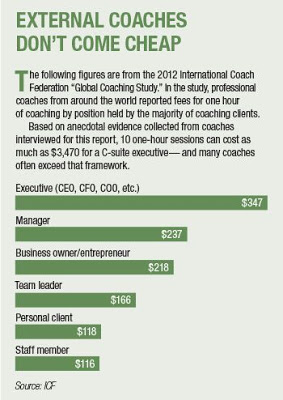With summer in full swing, many organizations are choosing to dial up the heat when it comes to employee wellness, with the hope that improved wellness will lead to reduced health care costs and a boost in productivity.
Some have fit work stations with treadmills and standing desks, while others have incorporated lavish on-site workout facilities and exercise classes — perhaps with the hope that, aside from maintaining a healthy lifestyle, employees will never want to leave the office. Lost in the wellness hysteria, however, is a simple truth: Truly effective employee wellness requires very little effort.
Consider the case of Jack Groppel, co-founder of the Human Performance Institute and vice president of applied science and performance training at Wellness & Prevention Inc. Groppel has been studying the concept of energy management for more than 30 years. He started his career studying world-class athletes and eventually worked his way to a position as chairman of the Sports Science Committee for the United States Tennis Association.
One of the feats that intrigued Groppel during his time with U.S. Tennis was the players’ recovery time between points. “Their heart rates will be over 170 beats a minute and when they finish a point, they’ve only got 20 seconds before they go on to the next point,” he said.
So we started looking at the science of what’s going on in that 20 seconds to sustain that kind of heart rate activity over three to five hours (the typical length of a tennis match), and what they found is that they were able to get a trough of recovery.”
This short burst of recovery time enabled the players to sustain such a high level of energy, prompting Groppel to look into the effect recovery had on the brain. What he found was that the concept of recovery happens in very short intervals. When someone starts moving, even for a period as short as one or two minutes, a short surge of oxygen hits the brain, driving more blood and energy throughout the body.
This discovery prompted Groppel to ask the question: Why are office workers stuck doing business the way they do, seated and hardly moving? If traditional business people could implement short bursts of movement throughout their day — driving more oxygen to the brain — workers could use the same type of recovery as an athlete would.
This led to the creation of the Organizations in MOTION program, which aimed to study the impact of small and frequent amounts of physical activity on employee energy levels, cognition and engagement. New Balance, an athletic apparel and shoe company, agreed to let roughly 750 employees in its corporate offices in Boston and Lawrence, Mass., participate in the 90-day program earlier this year.
Groppel kicked off the program by presenting the participating employees with a toolkit — daily email tips with suggestions for creative workplace movements and other relevant information. Groppel said movements could include anything from stretching every 25-30 minutes to taking a walk around a conference table during a meeting.
“Any kind of motion is critically important,” Groppel said. “If you’re sitting still for a long period of time or sitting in a meeting, simply standing up and getting in the back of the room and doing some stretching would give enough of a blip in the heart rate to get more blood flow to the brain.”
To keep participating employees motivated, New Balance appointed “movement champions” and used incentives. In one example, the movement champions would place gift cards in spots on stairwells to encourage participants to take the stairs to and from meetings.
Kristen Sullivan, a global public relations manager at New Balance, said the company already had a sound wellness atmosphere. Like other wellness-centric firms, it incorporated standing desks and fitness activities into the corporate culture.
But the act of incorporating the Organizations in MOTION program throughout the day made all the difference in increasing energy and productivity because a high volume of small movement is actually a boon to overall energy and productivity, Sullivan said. Even the most avid fitness buff should complement an hour of intense workout with a full day’s worth of basic movement.
“Little things [are most effective], like having a walking meeting,” said Sullivan, who was also one of the movement champions.
Employees were surveyed both before and after participating in the program. Not surprisingly, many reported feeling increased levels of energy and engagement. For instance, Groppel said 37 percent reported higher energy levels in the middle of the day, an 11 percent increase from the pre-study responses. Moreover, when asked how employees felt about work, nearly all measures increased in the post-study assessment, Groppel said.
While the movements in the Organizations in MOTION program are simple, Groppel said the trick is getting the culture to buy in. Having an employee stand up and walk around during a meeting shouldn’t call for a break in the meeting. It should be considered a normal and acceptable practice.
Leadership buy-in has provided a tremendous boost to New Balance’s efforts to practice Organizations in MOTION, Sullivan said. “It’s been enforced top down — it doesn’t seem strange if during a two-hour meeting you just get up and walk around if you’re getting lethargic,” she said.
Frank Kalman is an associate editor of Talent Management magazine. He can be reached at fkalman@talentmgt.com.















